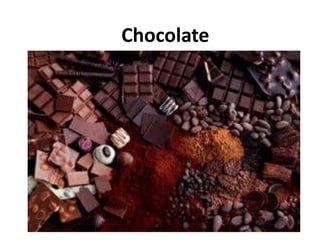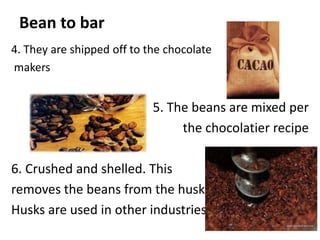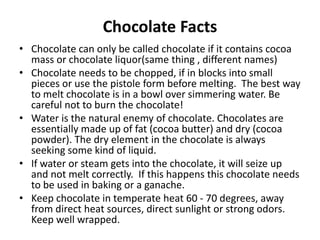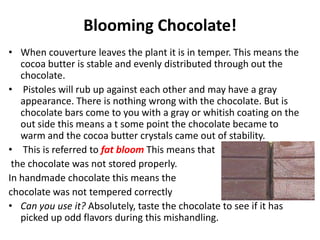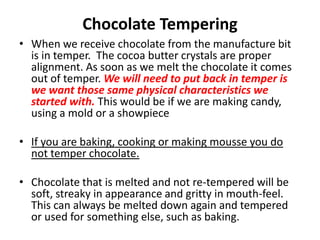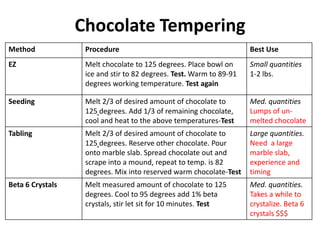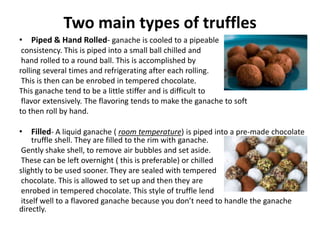The document provides information about the history and production process of chocolate. It discusses how the Aztecs first discovered and used cocoa beans to make a bitter beverage. It then describes the multi-step process of turning cocoa beans into chocolate, from harvesting and fermenting the beans to roasting, grinding, kneading, rolling, and conching them. The document also covers different types of chocolate like couvertures, dark chocolate, milk chocolate, and white chocolate. It provides details on chocolate tempering and tips for chocolate tasting and storage.
